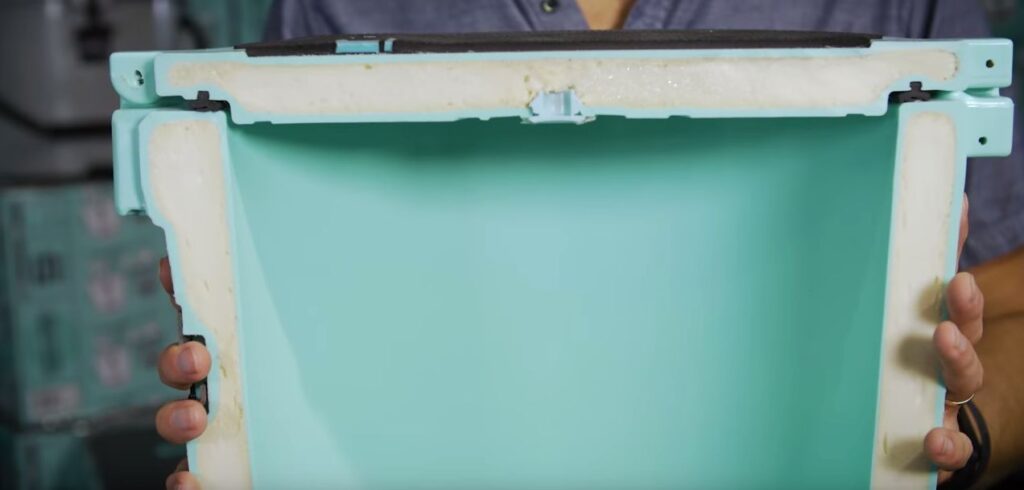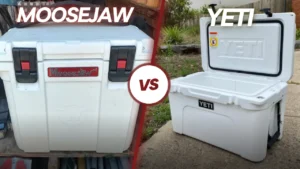Coolers are great at keeping ice cold for long periods of time but what insulation is used in coolers and how do they work?
In this article we'll look at the different types of common insulation used in coolers as well as some of the innovative insulation coming down the line.
Coolers primarily use different types of foam insulation. Cheaper hard coolers use styrofoam (extruded polystyrene) while expensive hard coolers like Yeti use the heavier but more effective polyurethane. Soft sided coolers generally used closed-cell polyethylene (PE) foam.
Different foams offer different benefits in each cooler.
Cheaper coolers use styrofoam which is cheaper to produce but is also a lot lighter than other types of insulation, making the cooler easier to carry around.
PE foam in soft sided cooler is soft and squishy and also extremely lightweight. It's not as good as the insulation in hard sided coolers but that's the tradeoff.
Expensive coolers use polyurethane foam which is better at insulating and also sets hard adding strength to the cooler. It has the downside in that it's really heavy which is why Yeti coolers weigh so much.
What Type of Foam Is Used In Coolers?
There are 4 main types of foam used in coolers. Cheap hard coolers use extruded polystyrene (styrofoam) or expanded polystyrene (cheaper styrofoam). Soft coolers use polethylene (PE) foam and expensive coolers like Yeti use polyurethane foam.
CHEAP HARD COOLERS: Styrofoam (Extruded/Expanded Polystyrene)
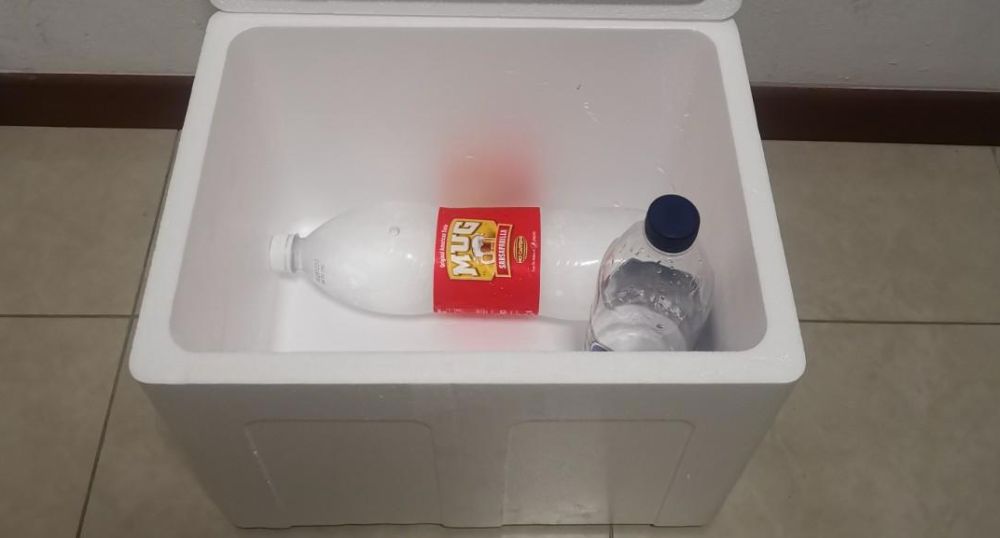
The cheaper coolers that you would pick up from your local Walmart or hardware store usually contain styrofoam.
These could either be extruded polystyrene or expanded polystyrene. Both types of foam are similar with extruded polystyrene being slightly more expensive but also slightly better at insulating.
These work by trapping millions and billions of tiny bubbles of air in what's called “closed cell” insulation. Heat struggles to move through air especially when that air is trapped in tiny bubbles and heat can't free flow around.
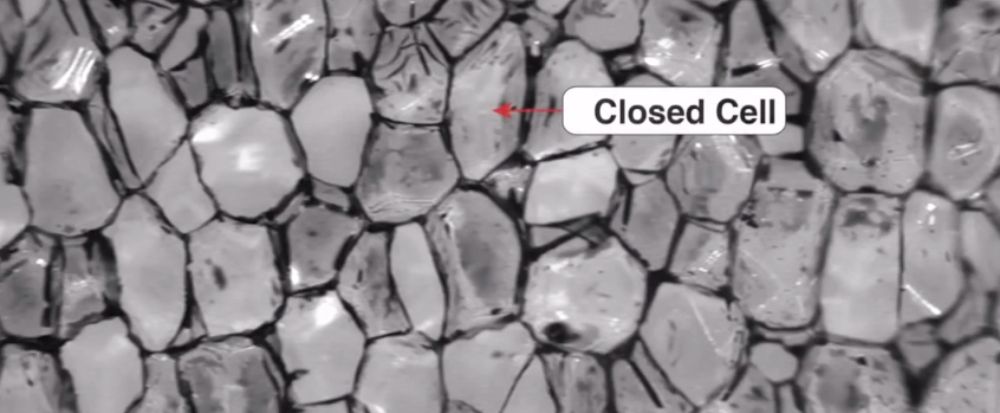
Styrofoam is molded into the exact shape it needs to be for the cooler. It's a hard foam and easy to cut to precise measurements using saws or even lasers. They then have plastic molds laid over the top of them to create the inside and outside of the cooler and protect the insulation from water.
Cheaper coolers are blow molded and use HDPE plastic on the outside and polypropylene plastic on the inside. Coolers are actually BPA free btw.
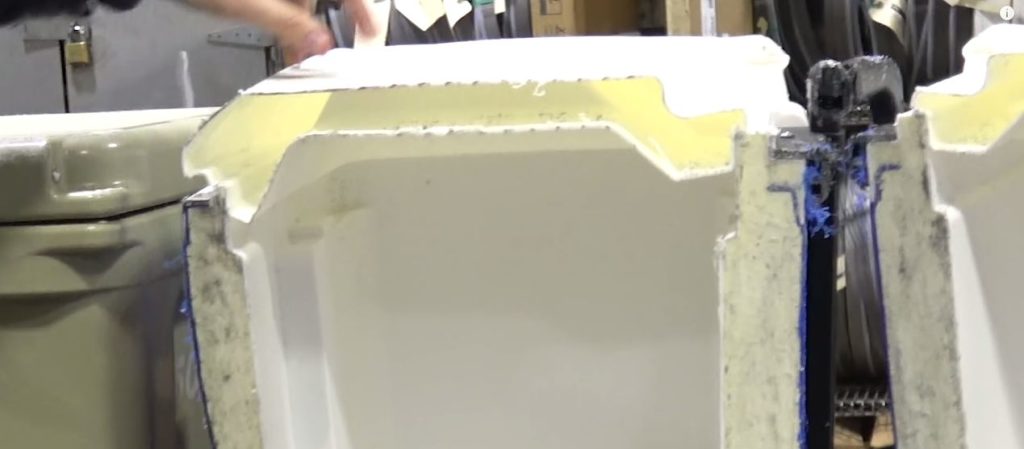
It's interesting to note that cheaper coolers usually don't have insulation in the lids of the cooler at all, but rather just have an air cavity. This is a weak spot in the insulation and makes the coolers less effective overall.
The best cheap cooler is the Coleman Xtreme cooler as it is a similar price to other cooler but has thicker insulation and can hold ice longer.
See the latest price of the Coleman Xtreme at Amazon

EXPENSIVE HARD COOLERS: Polyurethane Foam
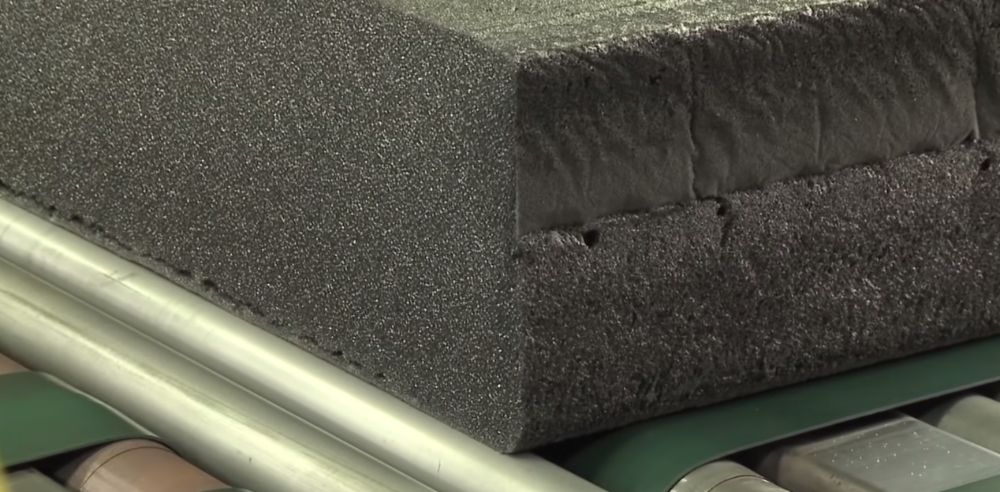
Expensive coolers like Yeti use polyurethane foam.
This foam is denser than the styrofoam used in cheaper coolers and contains even more and smaller air bubbles.
It is generally pressure injected into a cooler mold where it fills up all the air gaps completely with insulation.
Polyurethane sets hard which adds extra strength to the cooler and it's one of the reasons coolers like Yeti are so strong and difficult to break.

Polyurethane is a better insulator than styrofoam but it's also heavier and more expensive. High-end coolers like Yeti also use a lot more of it.
The walls of these coolers tend to be around 2-3 inches thick and they also have around 3 inches on insulation in the lid.
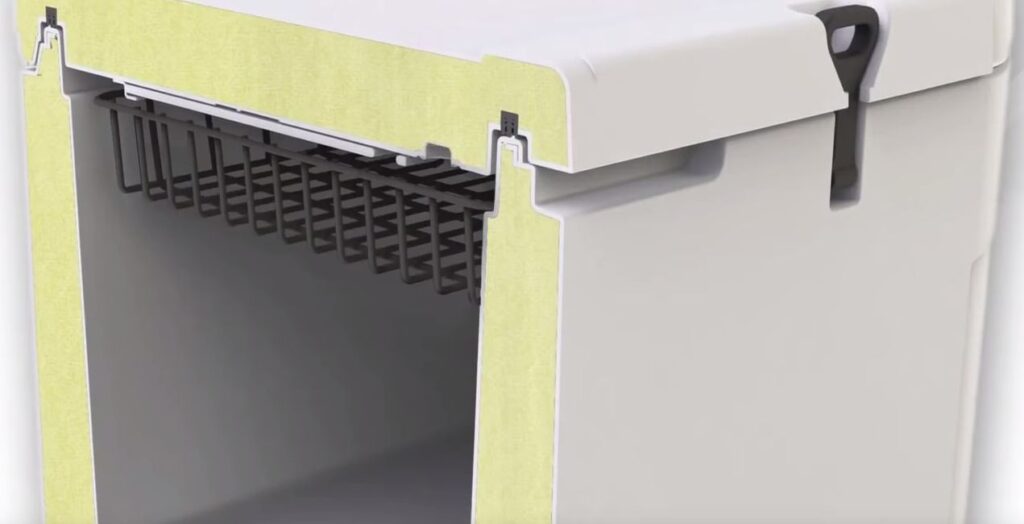
The combination of better insulation mixed with thicker walls and just more insulation overall, plus extra features like freezer-grade gaskets and lid latches allow these coolers to keep ice 5+ days and sometimes even as long as 2 weeks! See which coolers keep ice the longest here.
Yeti is obviously the most popular high-end cooler brand using polyurethane but other brands like RTIC, ORCA, Ozark Trail, Lifetime and basically every thick and heavy duty cooler uses polyurethane foam as it's insulation.
Yeti coolers are still a personal favorite brand of mine and still one of the best coolers on the market.
See the latest prices of Yeti coolers at Amazon
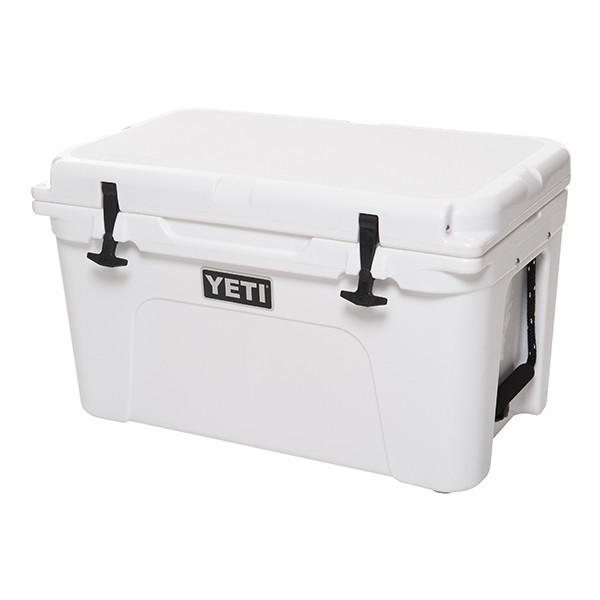
SOFT SIDED COOLERS: Polyethylene (PE) Foam
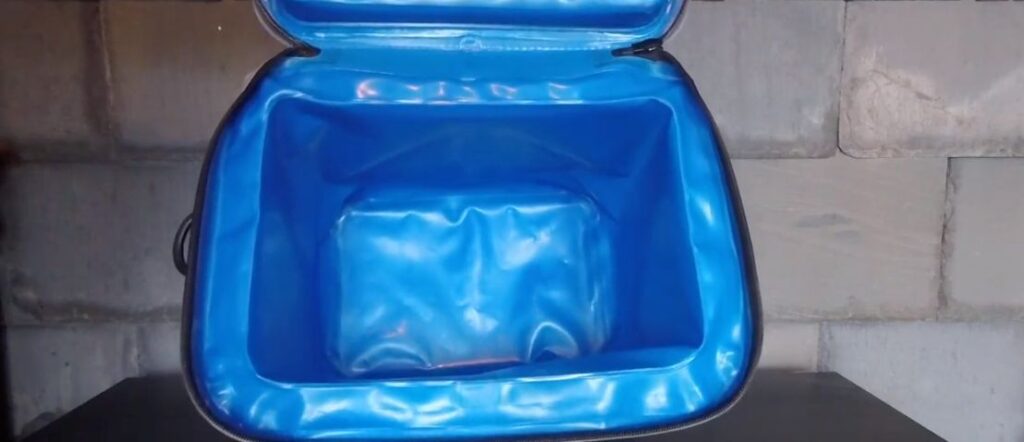
Soft sided coolers usually use a polyethylene foam, also known as PE Foam.
The more expensive soft sided coolers use closed cell PE foam while cheaper soft sided coolers might use open cell PE foam or even styrofoam covered with material or a soft outer foam layer.
The better quality soft sided coolers use PE foam, not styrofoam as it's more durable. See the best soft sided coolers on the market.
Closed cell means the air bubbles are all trapped and separate from each other so air can't flow as there are barriers between them. Open cell means each air bubble is somewhat connected to the air pocket next to it so air can flow easier making it a less effective insulator.
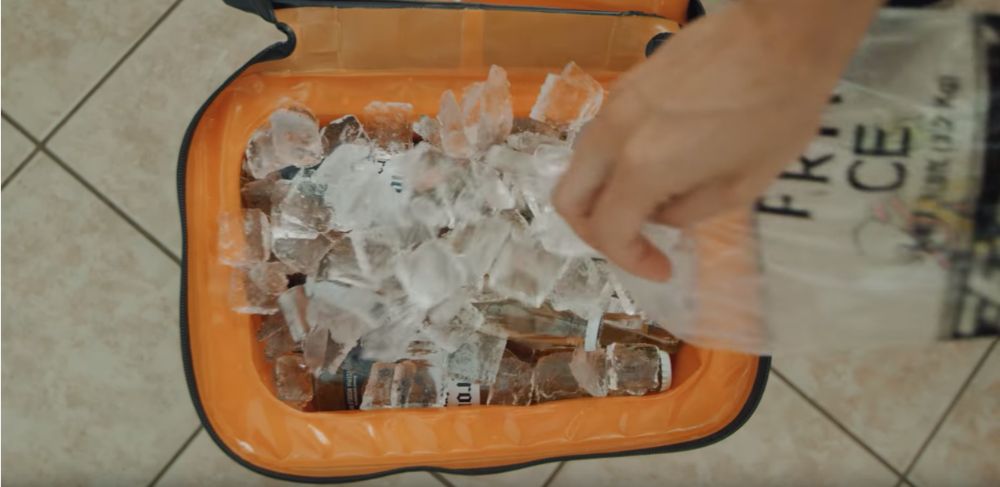
PE Foam is lightweight and it's rigid. The fact that it doesn't weigh much and that it's a bit cushiony to touch makes it perfect for soft sided coolers which need to be more portable and comfortable to carry.
PE Foam has low water absorption anyway but it's usually covered by a layer of material, which in the more expensive coolers is waterproof.
Yeti make a great range of soft sided coolers but truthfully I think the best soft sided cooler is the Engel HD30. It's ice retention is way better than anything else on the market, it's made from super durable materials and it's more affordable compared to Yeti, saving you up to $100.
See the latest price of the Engel HD30 at Amazon
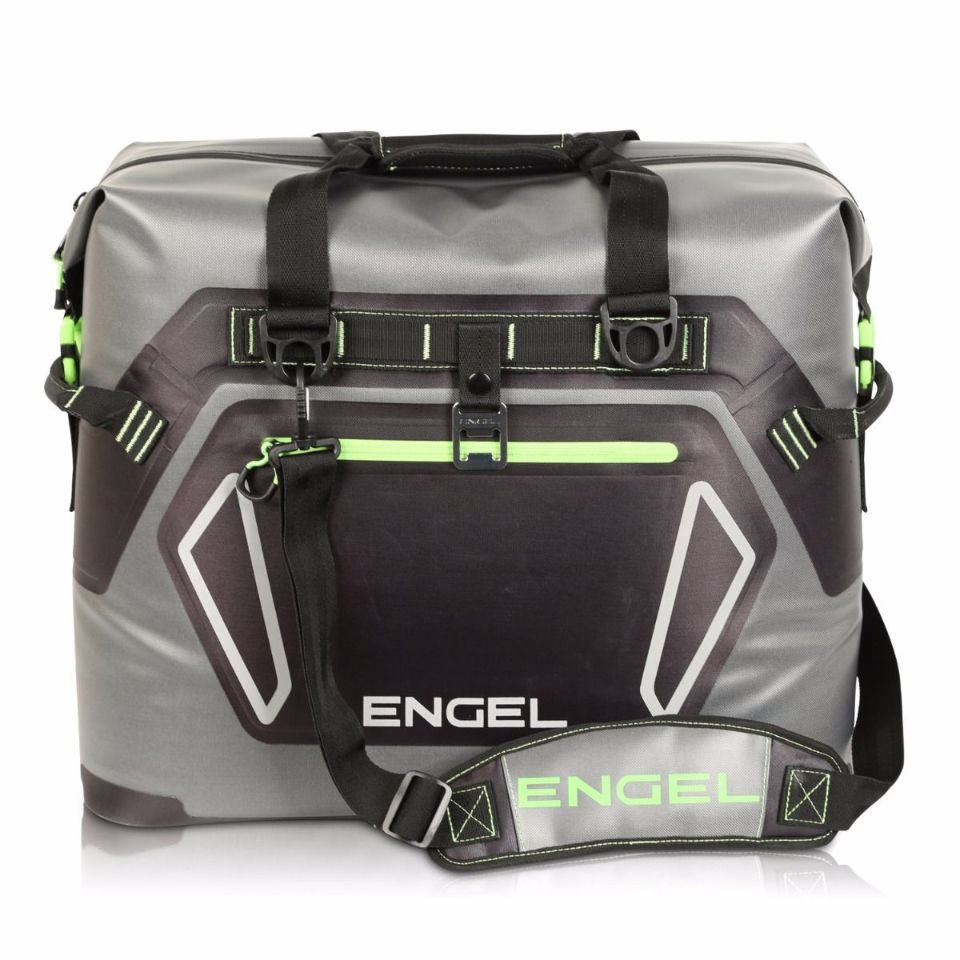
Vacuum Insulation

Up until very recently vacuum insulation has never been used in coolers. But Yeti just launched the Yeti V Series cooler which uses vacuum insulation and is the best cooler for holding ice.
It's been effectively used in drink bottles where brands like Hydro Flask use vacuum insulation to keep ice cold for 24+ hours.
A vacuum is actually the best known insulator with an R-value of 14-66 per inch. Compared to polyurethane foam with an R-value of 5.5-6.5 you can see why vacuums work so well.
The Yeti V Series is currently the only cooler using vacuum insulation and it uses a combination of vacuum insulation and polyurethane foam. Apparently it can hold ice 50% longer than a regular Yeti cooler, which is a huge leap in performance.
But it's ULTRA EXPENSIVE and will set you back a lot of money. But if you can afford it this cooler is the best money can buy.
See just how expensive the Yeti V Series cooler is
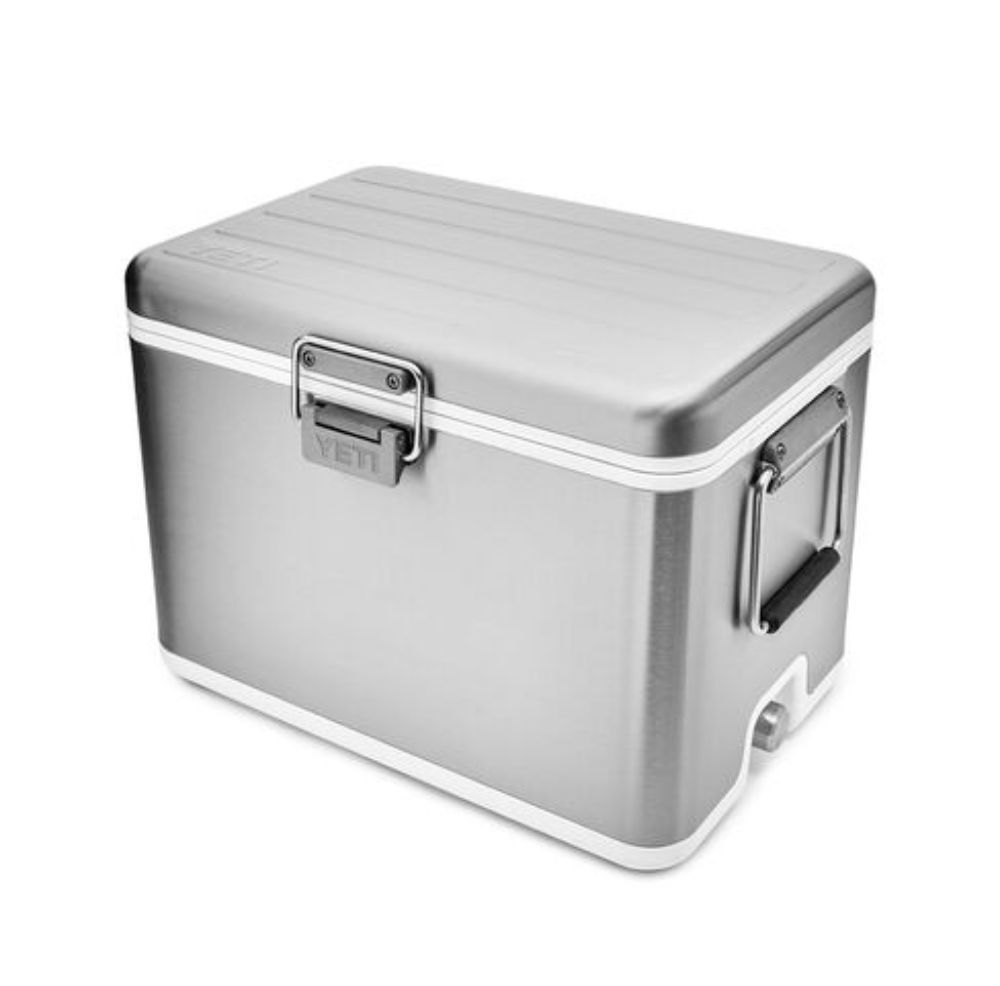
What is the R Value Of Coolers?
An R Value is an insulating value given to different materials to show how effectively they keep out heat.
R value depends on the insulating material used as well as the thickness of the insulation.
Expensive coolers like Yeti using a more insulating material (polyurethane instead of polystyrene) PLUS they make the walls of their coolers thicker to hold ice longer.
Cheaper hard coolers tend to have no insulation in the lids. This dramatically reduces their overall R value and ability to insulate and keep ice frozen because heat can more easily enter through the lid.
This is why expensive soft sided sided coolers can hold ice for longer than cheaper hard sided coolers even thought the hard sided coolers have better insulation in the walls.
Below you can see R value estimates for a regular hard sided cooler, a expensive soft sided cooler and an expensive hard sided cooler.
Regular Cooler

Insulator: Expanded Polystyrene Foam
Wall Thickness: 1 inch
Walls R-Value: 5
Lid Insulation: Air
Lid Thickness: 2 inches
Lid R-Value: 0.34
Yeti Soft Cooler
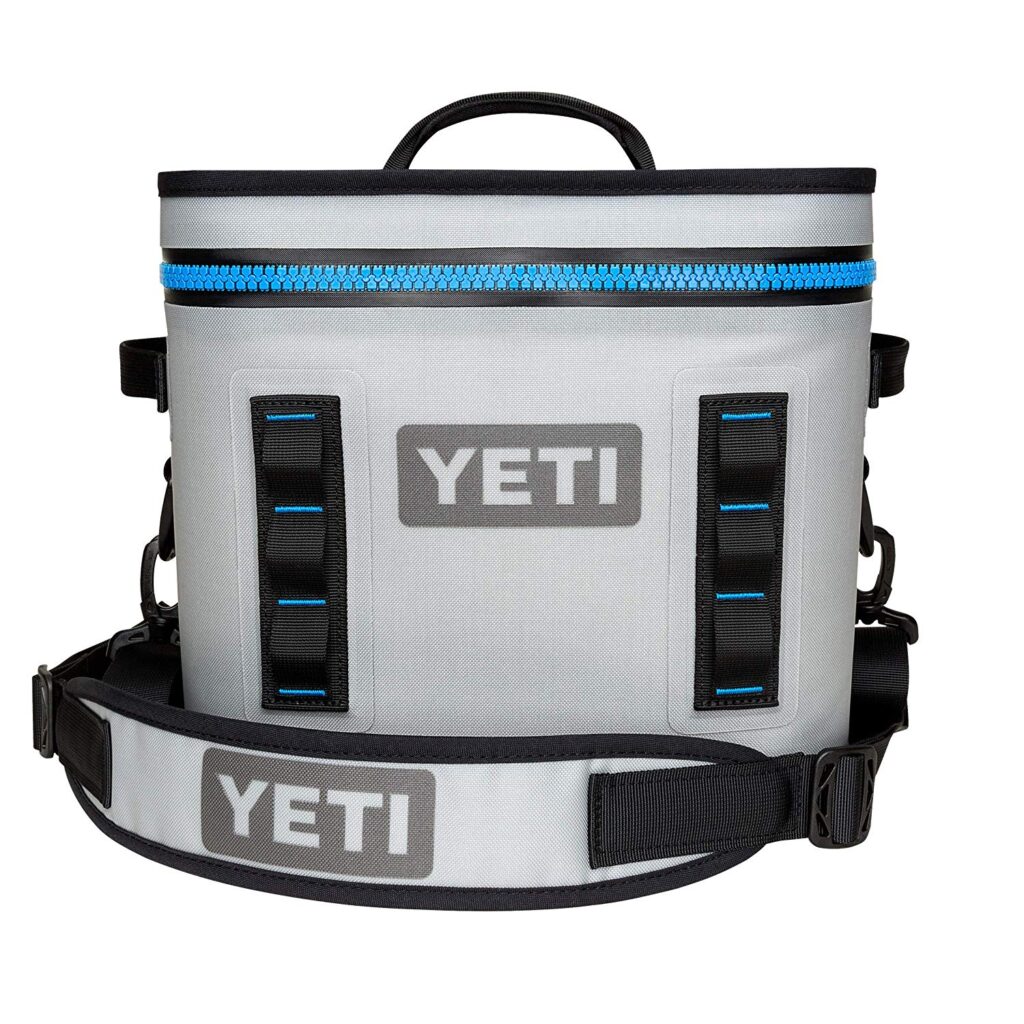
Insulator: Polyethylene Foam
Wall Thickness: 0.75 inches
Walls R-Value: 2.25
Lid Insulation: Polyethylene Foam
Lid Thickness: 1 inch
Lid R-Value: 3
Yeti Hard Cooler

Insulator: Polyurethane Foam
Wall Thickness: 2 inches
Walls R-Value: 12
Lid Insulation: Polyurethane Foam
Lid Thickness: 3 inches
Lid R-Value: 18

